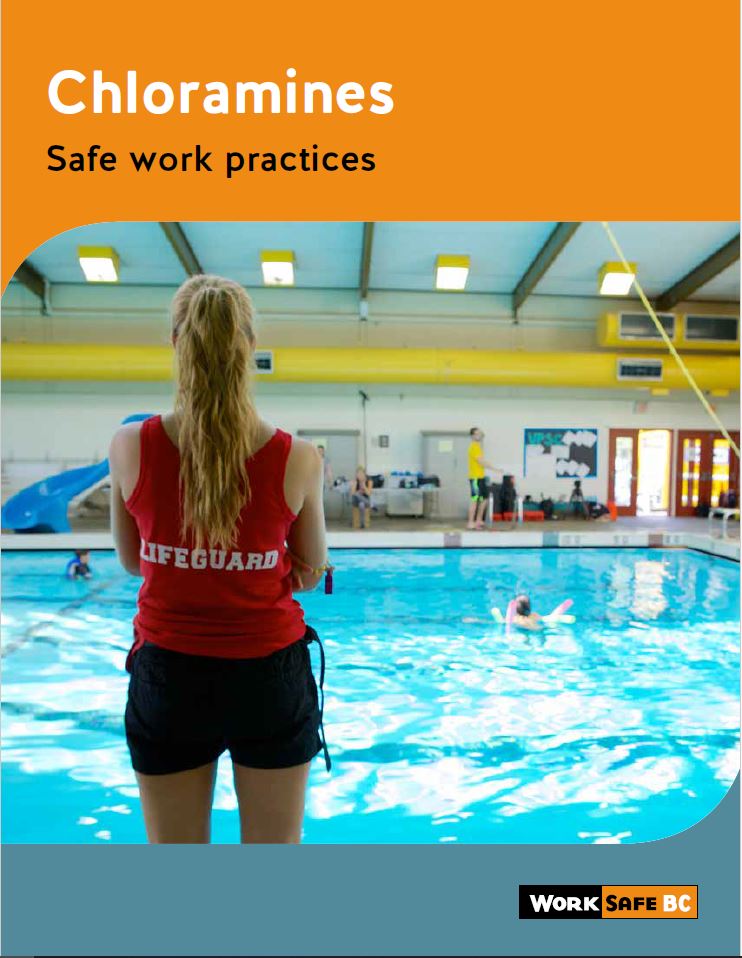July 31, 2017
Pool Safety: Chloramines – Safe Work Practices
Chloramines Overview
Swimming pools, waterparks, hot tubs, and spas are popular palces for playing, exercising and relaxing. Due to British Colubia’s varied climate and people’s desire to swim or soak year-round, many of these faciities are located indoors. Various disinfectants including chlorine, are used to kill pathogens (viruses, bacteria, parasites, etc.) in the water. Chlorine interacts with material from bathers (sweat, urine, sunscreen, cosmetics, etc.) to form chemical by-products such as chloramines.
Chloramines have been associated with upper respiratory and eye irritation. They may also lead to longer-term health issues such as asthma. In order to reduce their workers’ exposure to these chemicals, employers need to monitor and maintain water quality at these facilities. Employers should also remind people who use the pool to shower before entering the water and to use proper washroom facilities.
Who should read this manual
This manual is mainly for the following groups:
- Recreational facility owners and managers who use chlorine or choramines for water treatment
- Maintenance personnel, lifeguards, and others who work in these facilities
- Consultants who provide occupational health and safety services
Consultants and employers will find information in this manual to help them comply with Occupational Health and Safety Regulation and ensure a safe environment for workers and others who may be exposed to chloramines. Workers will find information to help them recognize the health effects of exposure to chloramines and know how to protect themselves.
